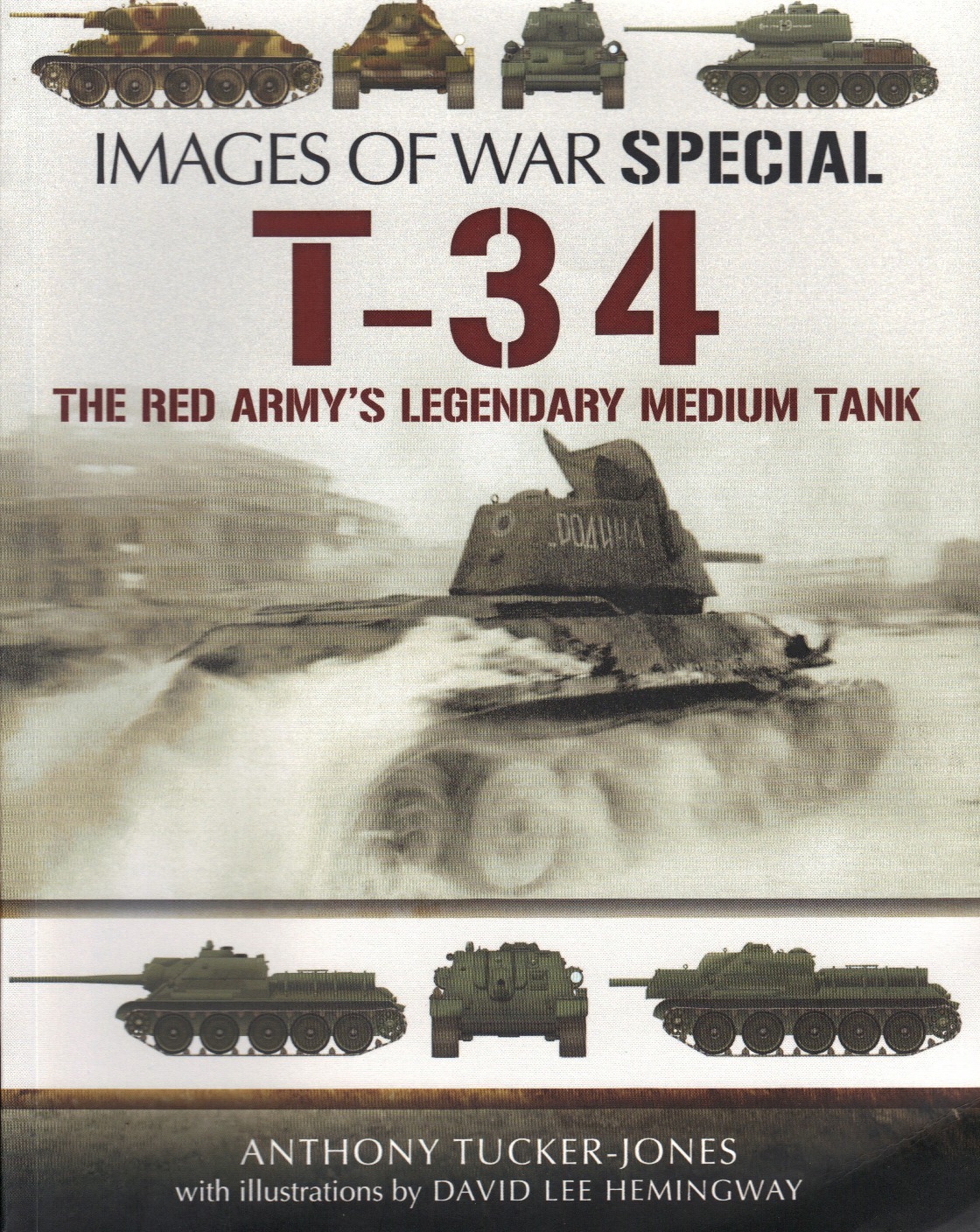Images of War Special: T-34 The Red Army’s Legendary Medium Tank
Was the Soviet T-34 the most important tank of the Second World War? It certainly was produced in the largest numbers, 57,000 between 1941 and 1945, more even than the ubiquitous M4 Sherman series. And it was undoubtedly superior to the Sherman in many areas, including armor protection and main armament. And without doubt the most massive and arguably most important armored battles of WW2 took place on the Eastern Front, where the T-34 dominated Soviet tank strength numbers. Did in fact the T-34 “win the war” for the Allies, responsible as it was for inflicting massive damage to more Axis divisions than any other Allied military vehicle? Whatever your answer to this question it is undoubtedly true that the T-34 was an extremely important cog in the Soviet military machine that crushed the Germans and their allies on the Eastern Front.
There have been many books over the years detailing the T-34 series of tanks, which not only include the T-34/76 and T-34/85 tanks, but also the Su-122 and Su-85/100 assault guns. These range from the thin and inexpensive tomes such as Squadron Signal’s T-34 in Action, to the massive, such as Robert Michulec’s T-34 Mythical Weapon. So where does this latest T-34 publication penned by Anthony Tucker-Jones stand and what does and doesn’t it cover?
This book is soft covered, being 144 pages in length, the pages measuring 7.5” by 9.5”. It is divided into 11 chapters, as follows:
- Birth of a War Winner, which covers briefly the Soviet tank designs in service prior to the introduction of the T-34, such as the BT series of Christie tanks, plus other contemporary “Medium” tanks such as the T-35 and the KV-1.
- A Winning Upgrade – T-34/85
- T-34 Variants - A brief written introduction to various T-34 sub types such as the Su-122, Su85, Su-100, OT-34 Flamethrower.
- Too Few Too Late - This covers initial T-34 production prior to the German invasion of the Soviet Union in 1941, and how the Germans were able to overcome the large numbers of mostly inferior Soviet tank designs encountered during the initial months of the invasion.
- Moscow Miracle - covering Soviet tank strength during the Battle for Moscow, the transfer of Soviet tank production from the western regions of the Soviet Union to the eastern areas far from the reach of the Germans. This chapter includes 12 pages of color plates showing the T-34/76, T-34/85, Su-122, Su-85. However, this is NOT a colors and markings section, but simply a series of (scale not listed) color drawings showing the layout of each vehicle type. Included in this chapter are also three pages of color photos of an immediate post-war T-34/85 from a private collection, detailing mainly the engine compartment.
- T-34s in Ukraine - details T-34 production in 1943, and the tank battles in this theater, outlining the need for better armor and firepower for the T-34 as the Germans up gunned and up armored their tank forces.
- T-34s in White Russia - details the introduction of the T-34/85 as an attempt to upgrade Soviet tank forces in the face of the German introduction of the Panther and upgunned Panzer IVs.
- T-34s on the Seelow Heights - Soviet forces move in for the kill on Berlin in the last year of the war.
- T-34 Tank Aces - brief coverage of a number of high scoring T-34 tank commanders.
- T-34 Killers - details briefly the various German weapon systems that did battle with the T-34, from tanks (Panther, Panzer IV, Tiger 1) to aircraft (Ju-87, Hs-129).
- Cold War T-34s - the T-34 in Korea, Hungary 1956, the Arab-Israeli Six Day War etc.
From a modeler’s perspective, what this book does NOT contain are any scale plans, and no particularly useful color and markings drawings. The quality of the black and white photos varies widely, from good, to mediocre. The written text is informative, well written, though this is a general history, not a detailed history. If you are looking for a breakdown of the various improvements/changes made to the T-34/76 and T-34/85 during their production runs, you won’t find it in this book, neither in the written text, nor in the form of any scale drawings etc.
Overall, I would recommend this book to someone who wants a basic primer on the T-34 in Soviet WW2 service. If you already have a number of books covering this important Soviet tank, you probably wouldn’t improve your photo coverage or knowledge by incorporating it into your collection. I would like to thank Casemate Publishing for providing this book to IPMS USA to review for its members.




Comments
Add new comment
This site is protected by reCAPTCHA and the Google Privacy Policy and Terms of Service apply.
Similar Reviews